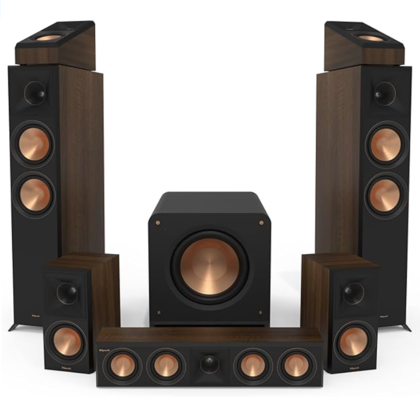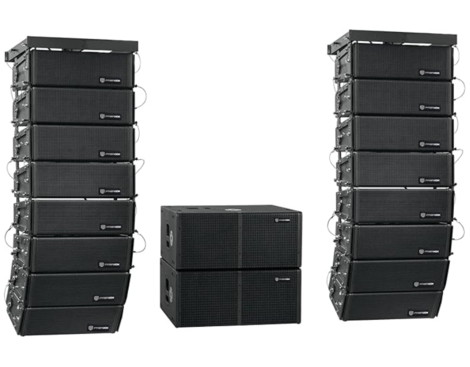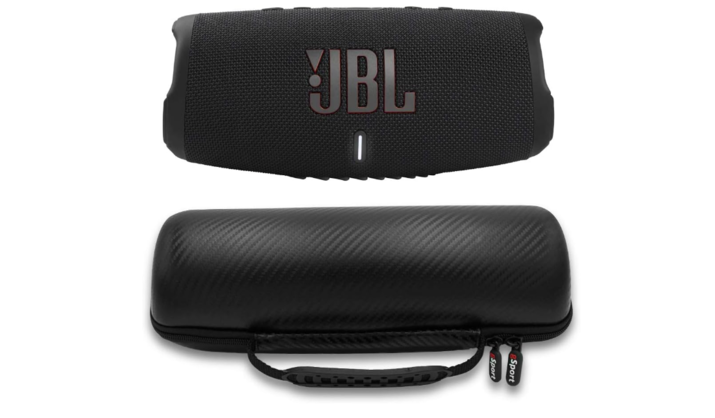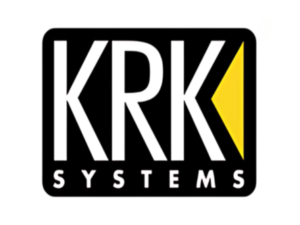Speakers
or
Monitors
What shall I buy Speakers or Monitors...
Is there really a difference???
These speakers don't have an amplifier, therefore don't produce a sound.

This is an example of passive speakers with crossovers designated at different frequencies, treble, midrange, and bass. These speakers, although crossed over, allow a little more range of the frequencies to slip through, producing a beautiful full sound. The crossover units with these speakers are passive units, not digital(they do not require a power source).
In many ways, these speakers sound better in home stereo, home theater, and satellite systems.
Passive Speakers
A passive speaker needs an outside source to power it. These would be the normal speakers in your home or most factory car stereos. Examples would be your home speakers, in your clock radio, your stereo, or your TV. Most items have passive speakers.
Passive speakers are driven by an external, lower wattage amplifier. Most items have a built in amplifier, which outputs an un-regulated amount of frequencies. Units have 1 or 2 speakers in a box or designated compartment. These speakers play in a full range frequency. The frequencies are not controlled. It allows you to hear a true sound. The sounds join/ marry together, to produce that beautiful noise, we call, sounds. Unfortunately, when you turn a device loud, the speaker starts to distort or bottom out. Lucky for us, some speakers are sold with passive crossovers in them. This allows us to sort of control the frequencies.
Most appliances have speakers that are not restricted. These restrictions may come in the form of a capacitor or a coil to change the frequencies. This unit that is created is called a passive or active crossover. This would help a speaker from distorting or bottoming out, as controlled frequencies pass through it. This unit allows bass to go to bass, mid to mid, and hi to hi. Unlike a stereo, most appliances don’t produce a sound loud enough for a crossover to be added to them, unless specified. Generally the manufacturer sound is great, we enjoy and work every day with the lower level, full range sound.
The operation of a crossover is fairly simple. It forces a speaker to play in a certain frequency range. In passive speakers, tweeters allow a higher frequency to be played, usually controlled by capacitors. Most speaker combinations have a second speaker, a mid/ bass speaker. This speaker moves more, having a bit of excursion. It is usually controlled by a single or a series of different size coils. This would be called a 2 way speaker cabinet. These speakers do not have an extremely hi wattage or volume setting.
There is a 3 way speaker system, and more speakers in specific cabinets, which produces an optimal sound. Crossed over at different treble, mid, and bass frequency points, these types of cabinets allow you to hear all the little nuances not brought out by a 2 way or full range speaker cabinet. Most speaker cabinets do not have an array of midrange speakers; or multiple bass speakers. But they do exist, like the speakers displayed. You never hear it, but single speakers or 2 way speakers lack that full depth of sound we hear, and take for granted, every day.
Multiple speakers, whether they are in one cabinet, or multi cabinets (ie: satellite speakers) is definitely one of the better systems to buy. When these speakers are crossed over, have the proper insulation, enclosed in an appropriate sized space, and are separated into compartments. One can spread apart the sound, then these speaker cabinets sound great, with much depth. The downfall is each cabinet gets the same amount of watts, and you are limited to the amount of cabinets you can add to one amplifier (ohms).
That is a very hard one to answer… Let’s find out what active speakers are, and maybe we can give a little more thought to that nearly impossible question…
These speaker cabinets have built in amplifiers and produce over 10,000 watts of a beautiful sound(a controlled frequency).

This is an example of active speakers with built in amplifiers, and cross overs. These speakers are designated to deliver multiple, different specific frequencies(treble, midrange, and bass frequencies). These speakers are typically used in staged concerts, recording studios, and some theater systems(these are typically louder commercial units). These speakers are ideal for live performances, and separating the dynamic sounds of each instrument. This allows us to fine tune and mix sounds together.
Active Monitors
An active monitor has one, two, or more amplifiers built into the speaker cabinet. These cabinets require a power cable, 120 or 240 volts, to power the amplifiers. These speaker cabinets are activated by a frequency signal, which has no watts. Watts delivered to watts will destroy amplifier units. This is one of the great things about Bluetooth, it only provides frequency signals.
Besides having built in amplifiers, the speaker cabinets typically have one or more built in active crossovers, or digital signal processors (DSP’s). Some amplifiers have a separate, more controllable DSP unit. Active here, simply means, it has a powered, digital signal. In turn, each feeds a different/ specific signal to each amp, resulting in different sounds (octaves). Whether it’s nearfield, midfield, of farfield speaker cabinets, they are all tuned to have specific sounds. Now we can control the different sounds, and or in equal equivalence, we can control their volumes. This gives each individual speaker a specific frequency, and specific volume, generating a specific sound… a great sound or beautiful noise.
Using an active monitor is important in a live or studio, producing specific sounds for that theater feel, or recordings. Active monitors allow us to single out certain sounds, fine tuning them, and adjusting volumes appropriately. We can sort of do, close to the same thing with Passive Speakers, but they are not controlled as much. This is the way they mix the sounds from music, movies, pod casts, and many other things we use in life. Typically these sounds are run through a mixer (control board), allowing us to adjust a small amount of these sound frequencies and volumes.
In my opinion, that is a very hard question to answer. There are people who listen to music, and there are people who love the specific sounds of instruments(they love music also). That’s a hard one to explain, but that is how it will end up. To me, the ideal stereo system would involve a combination of both of them, with every speaker being crossed over. Don’t get me wrong, they all have to be insulated, have their own tuned air space, and a specific amount of wattage delivered to each individual speaker. That, in my opinion we be the ultimate speaker system. You would have to have an amplifier producing wattage to crossed over speakers (passive system), and different speaker cabinets producing specific sounds at specific volumes (active system), all placed in specific areas.
hahaha, well that’s not an easy fix, being there are so many factors, and acoustical applications, when it comes to prime optimal sounds. Sounds are different when it comes to playing music and theater sounds (for movies). But we can get by with producing one, or both of the sounds together, and still receive that beautiful sound we all yearn for.
As for my opinion… I would want a combination of both types of speakers. You get the sharp punch of the DSP(digital crossed over speakers), and the combination of the passive crossover units(allowing more frequencies to slip through). Together, they would allow you to hear all the dynamic sounds; the combination the speaker units are capable of.

An example of bluetooth speakers with crossovers at different frequencies, for a 2 way speaker designation.
What about
Bluetooth/ Speakers
Well, that’s a pretty interesting question… The answer is neither one, it’s not an active of passive speaker unit. Bluetooth is actually a signal. Bluetooth speakers, have built in amplifiers. Some bluetooth speakers can be run with a cable(wire), or wireless. A bluetooth speaker has an amplifier within itself, requiring a signal, not amplified watts. If you supplied wattage to this type of speaker, you would destroy it.
Bluetooth speakers need a power source, and a signal to work. Since there are built in amplifiers with digital crossover units, they need some sort of power. In smaller units, they do run on a high endurance rechargeable battery power. In the larger units, like concerts or DJ equipment, those cabinets are generally run by a 120 volt, or in some cases, a 220 volt system. Besides voltage to power the unit, it also needs a signal to produce some sort of given sound.
While most bluetooth speakers are sold as a single speaker, generally, they produce a left and a right stereo sound. Most units allow you to couple two or more units together, this allows you to separate a left and a right signal. This allows you to have the true stereo sound. You would have to read the instructions, from each different speaker manufacturer. While some are limited to the amount of units you can combine, some connect to an outrageous amount of speaker units(cabinets).
No, bluetooth speakers have come a long way over the years. Today you can buy DJ equipment with rechargeable battery units, to be completely wireless(limited by endurance time). With most systems, the power is hard wired, and the bluetooth is just the signal supplied to the speakers. In most older systems you can buy a bluetooth unit, plug it into your existing stereo, and you can play your music from your phone, tablet, or any instrument(set up to put out a bluetooth signal). This would be a passive system, since you will be plugging into an amplifier, and it would supply wattage to the speakers.
A bluetooth signal, whether it’s to active or passive speakers units, is remarkable and easy to use. Bluetooth technology is the best form of technological connection we have to date.
Let's prioritize raw power, reliability, and sound quality
without unnecessary features or units.
When acquiring, one and done Stereo Speakers for the future, let's incorporate all the possibilities a speaker can do. Now add in unique amplifiers with cross-overs and a DSP.
With todays advancements, it's time to rethink the iconic stereo. Today we can stream and bluetooth everything from our smart devices. Relax and enjoy the theater THX and DOLBY sounds in your home.






